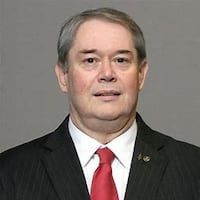MAJOR BIKE TRAILS IN SOUTHWEST OHIO
Great Miami River Recreation Trail: This 75-mile trail has a few missing links between Hamilton and Middletown; and between Middletown and Franklin, but it stretches from Hamilton and into the Dayton area bike trails and further north to Piqua.
Little Miami Scenic Trail: The longest trail in the U.S. at 76 miles stretching from Springfield to Newtown, Ohio. The trail will be extended to connect with the Ohio River Trail.
Ohio River Trail: Under development with some sections completed in downtown Cincinnati. When completed it will be 23 miles long stretching from Coney Island to Sayler Park.
Queen City-South Mill Creek Greenway Trail: Under development with the section between Winton Road to the Mill Creek Bridge completed. The trail will eventually connect the Hamilton County Fairgrounds in Carthage to the Cincinnati Riverfont Park and the Ohio River Trail.
A feasibility study done in 2002 by a group of Butler and Warren county communities is getting some new attention again.
Tri-State Trails, a non-profit organization that focuses on developing multi-use trails throughout southwest Ohio, convened a meeting earlier this month to see where area communities were on trying to link the two main bike trails in the region.
“This meeting was to better understand what the priorities are in the communities and develop action steps to look at these corridors of the 2002 plan,” said Wade Johnston, regional trails coordinator for Tri-State Trails. “We want to work with local communities to take the next step and maybe apply for funding.”
In 2002, the Miami 2 Miami Connection was proposed as an 84-mile network of interconnecting bike trails made up of 10-feet wide trails; 5-feet wide bike lanes on roadways and signed shared roadways to connect the Great Miami River Recreation Bike Trail to the Little Miami Scenic Trail. The two trails already link into bike trail systems in Dayton and Cincinnati areas.
John Heilman was part of the 2002 study. He said that the Miami 2 Miami connection and the missing links along the Great Miami River Recreation Bike Trail were the top projects that have yet to be completed. Heilman said the study recommended roads with bike lanes; separated paths; shared roads with signs; and future trails.
He said that the study then was a guide to connect both trails via two routes, a north and a south route from the Little Miami trail in Warren County and across Butler County to the Great Miami River trail.
The north route would have started at Mason-Morrow-Millgrove Road to Bethany Road in Warren County and continue east into Butler County through other trails and roads to reach the Great Miami River trail. The south route would have gone from the Kings Island area to Western Row and continue east on Tylersville Road. The trail would use the former Miami-Erie Canal right of way and other roads as it continued into Hamilton.
“Off road trails are what’s needed to get families out there,” said Matt Latham of MetroParks. “It takes a certain amount of courage to ride in bike lanes
Since 2002, a number of communities have been developing their own trails and are looking for ways to extend and interconnect them with other trails. A number of agencies such as MetroParks of Butler County and the Miami Conservancy District have also acquired land and right of way easements to develop other trails.
Some communities have bike paths that already go east and west that create a number of rungs between the Great and Little Miami rivers. Liberty and West Chester Twps. have some segments and there are proposed segments between Mason and Franklin as well as Monroe to Lebanon.
Matt Obringer, a Warren County planner, suggested that communities “stitch a number of the smaller trails that would connect to the larger trails” and develop destination points.
Hamilton Councilman Rob Wile said there would be an advantage to finishing the original southern route.
“There’s a lot of right of way already owned by MCD and MetroParks and that could easily connect to Joyce Park which has facilities,” he said. “Tri-State Trails has done a good job of bringing people together. I’m also glad to see there are 18 or so (bike path) projects on the 2040 plan.”
The communities and Tri-State Trails are planning a follow-up meeting to continue the conversation and determine future action steps.
“It’s a big vision and everyone agrees it needs connected,” Johnston said.
About the Author
